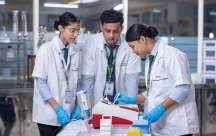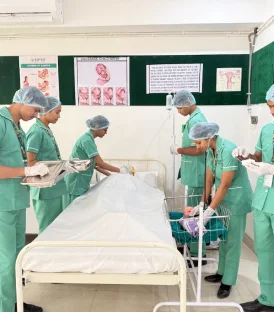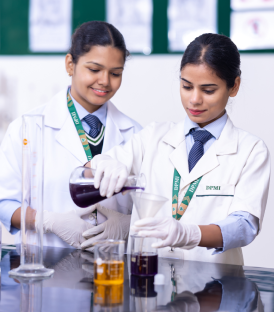November 23, 2021
What is anemia?
Anemia results from a lack of red blood cells or dysfunctional red blood cells in the body. This leads to reduced oxygen flow to the organs.
Symptoms may include fatigue, skin pallor and shortness of breath, light-headedness, dizziness or a fast heartbeat.
The severity of anemia depends on the level of hemoglobin. Hemoglobin is a protein present in red blood cells that transport oxygen from the lungs to the other parts of the body. Hemoglobin formation requires iron, so most of the people who have anemia have a shortage of iron.
There are various types of anemia with their causes and treatments. Anemia can be mild to severe as per the level of hemoglobin.
The diagnosis of anemia in men is based on a hemoglobin of less than 13 to 14 g/dL in women12 to 13 g/dL Further testing is then required to determine the cause. Read More
Types of Anaemia: Anaemias are divided into three groups:
- Anaemia caused by blood loss.
- Anaemia caused by decreased red blood cells
- Defected red blood cell production.
They include:
- Iron deficiency anaemia.
- Thalassaemia.
- Aplastic anaemia.
- Haemolytic anaemia.
- Sickle cell anaemia.
- Pernicious anaemia.
.
Iron deficiency Anaemia
Your body needs iron to make hemoglobin, the protein in RBCs that carries oxygen. The main way you get iron is from food. At certain times—such as during pregnancy, blood loss—your body may need to make more RBCs than usual. Thus, your body needs more iron than usual. Iron-deficiency anemia occurs if your body can’t keep up with its need for iron.
Treatment: Iron supplements and dietary changes (eating food rich in iron and vitamin C, which increases iron absorption from food).
Thalassemia:
Thalassemia is an inherited blood disorder characterized by less oxygen-carrying hemoglobin and fewer red blood cells in the body than normal.
Symptoms: include fatigue, weakness, paleness, and slow growth.
Thalassemia is caused by mutations in the DNA of cells that make hemoglobin in red blood cells that carries oxygen throughout your body.
Thalassemia is inherited, meaning that at least one of your parents must be a carrier of the disorder. It is caused by either a genetic mutation or a deletion of certain key gene fragments.
Thalassemia minor is a less serious form of the disorder. There are two main forms of thalassemia that are more serious.
In alpha thalassemia, at least one of the alpha-globin genes has a mutation or abnormality.
In beta-thalassemia, the beta-globin genes are affected.
Each of these forms of thalassemia has different subtypes. The exact form you have will affect the severity of your symptoms and your outlook. Read More
The symptoms of thalassemia can vary. Some of the most common ones include:
- Bone deformities, especially in the face
- Dark urine
- Delayed growth and development
- Excessive tiredness and fatigue
- Yellow or pale skin
The treatment for thalassemia depends on the type and severity of the disease involved. Some of the treatments include:
Pernicious Anaemia: Vit. B12 and folate (another B vitamin) are needed to make healthy RBCs. Your body absorbs these vitamins from foods. Pernicious anemia occurs if your body can’t make enough RBCs because it can’t absorb enough vitamin B12 from food.
Treatment: Vitamin B12 supplements and dietary changes (eating foods rich in vitamin B12, such meat; fish; eggs; dairy products; and breads, cereals, and other foods fortified with vitamin B12)
Aplastic Anaemia
The term “anemia” usually refers to a condition in which your blood has a lower than normal number of RBCs. However, some types of anemia, such as aplastic anemia, cause lower than normal numbers of other blood cells, too. Aplastic anemia can occur if your bone marrow is damaged and can’t make enough RBCs, WBCs, and platelets.
The causes of aplastic anemia can be acquired or inherited. Groups at risk People undergoing radiation or chemotherapy, exposed to toxins, or taking certain medicines.
Treatment:
Depends on the cause of the anemia. Treatments may include blood transfusions, medicines, blood and marrow stem cell transplants, and lifestyle changes.
Haemolytic Anaemia:
Normally, RBCs have a lifespan of about 120 days. Your body constantly makes new RBCs to replace ones that die. Sometimes, RBCs are destroyed before their normal lifespan is up. Hemolytic anemia occurs if your body can’t make enough RBCs to replace those destroyed. Acquired hemolytic anemia occurs if your body gets a signal to destroy RBCs even though they are normal. Inherited hemolytic anemia is related to problems with the genes that control RBCs.
Treatment: Depends on the cause of the anemia. Treatments may include blood transfusions, medicines, surgery and lifestyle changes.
Sickle Cell Anaemia:
Sickle cell anemia, an inherited group of disorders, red blood cells contort into a sickle shape. The cells die early, leaving a shortage of healthy red blood cells (sickle cell anemia) and can block blood flow causing pain (sickle cell crisis). Read More
Infections, pain, and fatigue are symptoms of sickle cell disease.
Anemia symptoms associated with adult sickle cell disease
- Fatigue (feeling weak and unusually tired)
- Dizziness.
- Headaches.
- Cold hands and feet.
- Jaundice (yellow tinted skin or whites of eyes)
- Unusually pale skin and mucous membranes
Treatment: Stem cell or bone marrow transplants are the only cure for sickle cell disease. Read More

















